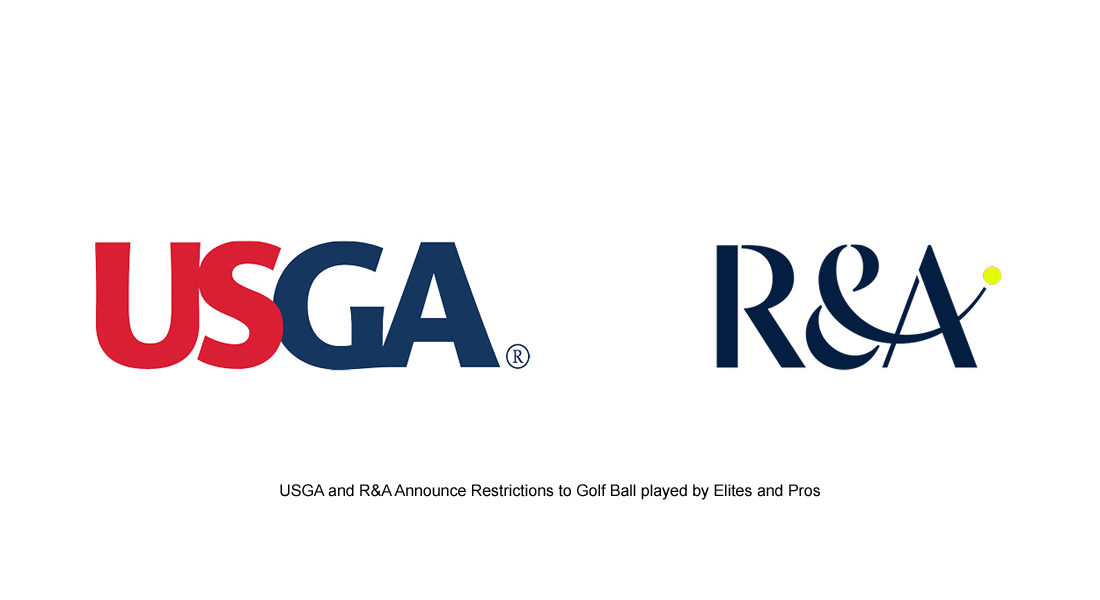 After taking a few days to think about the implications of a proposed rules change announced Tuesday March 14 by golf’s governing bodies, the USGA and R & A, the conclusion is clear. By decreasing the distance standard for golf balls played by so-called elite golfers, in effect rolling back the ball to the performance characteristics of twenty years ago, it is a solution in search of a problem.
After taking a few days to think about the implications of a proposed rules change announced Tuesday March 14 by golf’s governing bodies, the USGA and R & A, the conclusion is clear. By decreasing the distance standard for golf balls played by so-called elite golfers, in effect rolling back the ball to the performance characteristics of twenty years ago, it is a solution in search of a problem.
It’s almost certain in three years when the rule would go into effect fans of elite golf—college and professional—can look forward to seeing the big guys not hit it so big which is a negative for sure but the bigger problem more likely will be the reaction of ball makers such as Acushnet and Callaway.
In situations like this in the past—remember the long putter or square grooves–it says more about the governing bodies desire to control our game decades in the future rather than helping those with emotional and financial stakes in the game capitalize on the current growth trend. Why can’t we just make golf more attractive to play and watch rather than adding more restrictions?
It seems whenever the USGA is involved, their focus on the tradition and integrity of the game (whatever that’s supposed to mean), fans come out in second or third place. Referring to further restricting ball performance golf instructor Hank Haney said it several years ago, “People don’t go to a ball game to watch them hit bunt singles.” Fans don’t go to PGA Tour events to marvel at clever chip shots, holed three-footers or perfect 150-yard nine-irons. They go to watch the big guys smash the ball distances we can only dream about.
Otherwise, you might as well go bowling.
The governing bodies continue to be focused on what happened in the past not where the game is today and if there is one thing sure in this world it is you can never go back.
Certainly, at the elite professional level golf is entertainment and changing equipment to make golf less entertaining means fans are the losers.
In case you think the proposed rules change has a chance of not being adopted remember former USGA CEO Mike Davis swore the last think he would do is roll back the ball. The pandemic may have slowed down the process, but current CEO Michael Whan will ensure it happens.
They say the new distance standard in effect January 1, 2026, will only apply to the few thousand elite players in the world or using the word nobody says out loud, bifurcation. However, there is no assurance that won’t change and indeed since the U.S. Open and the British Open will enact the restricted ball specifications should “regular players” qualify they would have to comply certainly in the qualifying rounds too.
As far as the other major championships are concerned, the Masters probably will want to make use of a reduced distance ball—estimated at 14-15 yards less—but the PGA of America who runs the PGA Championship has not said what they will do.
If anyone knows that professional golf must be entertaining it is the PGA Tour and maybe they will not agree to use a reduced distance ball. They do know they must sell themselves to fans and comments by many current Tour members are against implementation. Further should the Tour opt out, that would create the interesting situation of week to week play with the “long ball” and two weeks annually, the U.S. and British Opens, having to play the “short ball.”
That makes no sense whatsoever. The PGA Tour is also in a competitive situation with LIV Golf and there is zero chance LIV will play the short ball. Additionally, the USGA says elite female players will not have to play the short ball, so the LPGA Tour doesn’t have a decision to make.
But what about the golf ball manufacturers you ask? An excellent question and according to a statement from Acushnet Company, the largest ball manufacturer, “Under the proposed guidelines, events that adopt this MLR [Model Local Rule] would require players to use a substantially shorter golf ball, similar in distance to what was available in the 1990’s.”
Do you remember the Titleist Professional? A fine ball, at the time everyone played it, but it was instantly out of date with the introduction of the solid core urethane cover Titleist Pro V1 in 2000. Ball makers marketing now is built around the average player being able to tee up the same ball as the PGA Tour stars. This aspirational quality of golf is integral to the charm, resiliency and long life of the game.
Singling out the golf ball is not a sound analysis of the situation when swing speed on the Tour continues to increase (2.23 mph in the past 15 years) but it would seem logical there is at some time an upper limit on the increasing athleticism of Tour players. That would limit the swing speed increases and therefore distance off the tee and with other clubs.
We haven’t heard the last from the ball makers and lawsuits are a possibility creating another mess caused by the USGA’s myopic view of modern golf.
